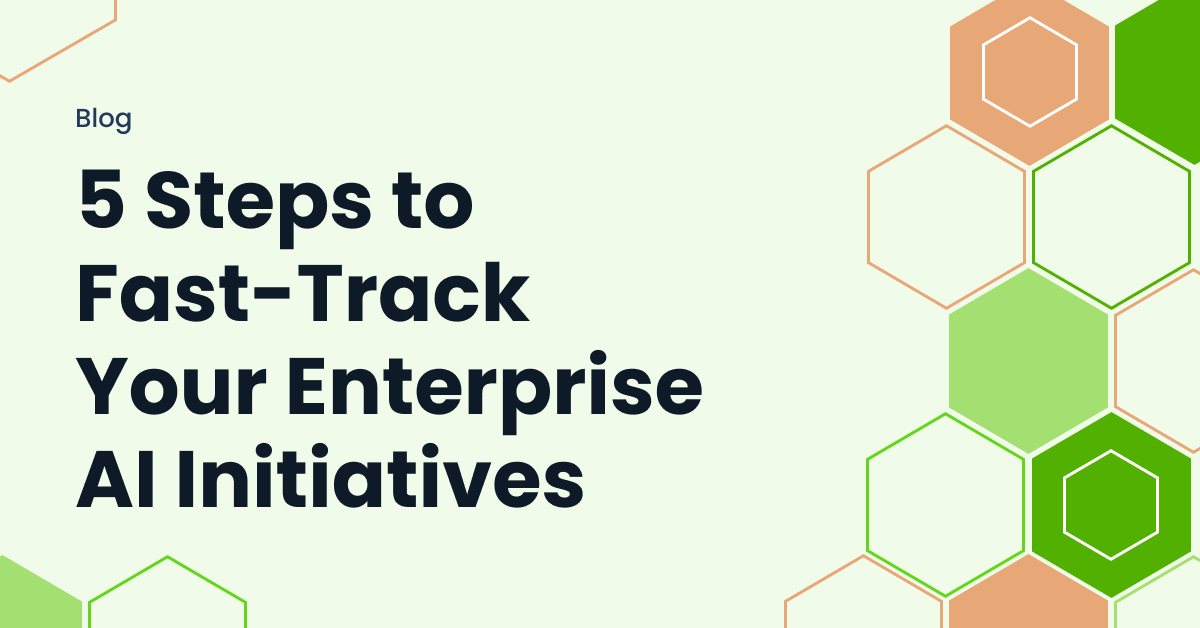5 Steps to Fast-Track Your Enterprise AI Initiatives
Nasuni shares five important steps to manage unstructured data and further enterprise AI initiatives.
June 12, 2025 | Nasuni

Artificial Intelligence (AI) has rapidly evolved from a futuristic concept to a practical enabler of innovation across global industries. Whether you’re optimizing supply chains, enhancing customer experiences, or unlocking insights from massive data sets, AI promises significant value. But without the right groundwork, even the most seemingly straightforward enterprise AI initiatives can stall or fall short.
In this blog, we outline five essential steps to lay a solid foundation for AI success, rooted in real-world challenges and universal best practices. Whether you’re just beginning or refining your current strategy, this guide can help ensure your AI journey is efficient, scalable, and impactful.
1. Eliminate Silos of File Data
The first step toward meaningful AI adoption is breaking down the silos that trap valuable unstructured data. In most organizations, data resides across disparate systems, file shares, legacy servers, and cloud platforms — often with inconsistent governance or access policies.
Consolidating this scattered information into a single, unified environment allows for easier management and analysis. By creating a single source of truth, teams can ensure that AI models access consistent, comprehensive, and high-quality data. Consider taking inventory of all current data sources and identifying overlaps, redundancies, and gaps that could interfere with AI readiness.
2. Prioritize Data for AI Use Cases
Once data is unified, the next challenge is knowing where to focus. Not all data is equally valuable for AI. Some files might be outdated, irrelevant, or poorly structured. Others might hold critical insights that could drive automation, improve decision-making, or fuel generative models.
Establish clear objectives for your AI initiatives, then assess which data supports those goals. Implementing tools or processes to evaluate data age, frequency of use, sensitivity, or metadata tags can help you rank data sets by relevance. Prioritizing high-value data streamlines training cycles and maximizes model accuracy.
3. Deliver Fresh File Data to AI Services
AI thrives on real-time insights. Stale or outdated data can lead to flawed outcomes, especially in dynamic environments. But integrating up-to-date file data into AI workflows often means building complex data pipelines or moving large volumes of content between systems.
To avoid latency and bottlenecks, aim for architectural simplicity. Adopt data platforms or frameworks that allow edge or operational data to flow seamlessly into your enterprise AI tools. This ensures your models are learning from the latest developments, whether it’s a new customer interaction, a product update, or a regulatory change.
4. Connect to AI Services with the Right Interfaces
AI models don’t operate in a vacuum; they need structured access to the data that powers them. This means your data environment must support a range of interfaces, APIs, connectors, and integration protocols that link directly to your AI engines.
Evaluate your current infrastructure’s ability to “speak the language” of your chosen AI services. Can it connect to cloud-based tools? Is it compatible with enterprise search engines, LLM frameworks, or proprietary inference tools? Planning for compatibility from the start prevents roadblocks later and accelerates deployment.
5. Prepare for Agentic AI and the Future
As AI continues to evolve, the future belongs to Agentic AI — autonomous agents capable of reasoning, decision-making, and acting on behalf of users or systems. These agents require more than just raw data. They need flexible access to well-organized file systems and contextual intelligence from across the organization.
To stay ahead, ensure your infrastructure has multiple integration points, supports both structured and unstructured content, and can scale with the growing complexity of AI agents. Building for adaptability now will pay dividends as new AI paradigms emerge.
Where AI Success Really Begins
AI success doesn’t start with fancy algorithms or the latest tools — it starts with your data. Before you chase breakthroughs, build a foundation rooted in data fundamentals: consolidation, prioritization, freshness, connectivity, and flexibility. These are today’s new strategic imperatives for enterprise IT teams.
Organizations that invest in getting their data house in order will be the ones who cut through the noise and translate AI hype into actual, measurable impact. Bottom line? Real enterprise AI success begins not with code, but with a strong commitment to your data, your strategy, and your future.
Related resources

Webinar
Modernising File Storage Infrastructure in the Age of AI
Discover how evolving business demands and the rise of AI are reshaping file storage needs.
Learn more
May 15, 2025 | Nasuni
The AI Readiness Crisis: What Enterprises Need from Hybrid Cloud Storage in 2025
Nasuni discusses its latest research relating to AI readiness, and how enterprises can leverage the cloud to future-proof their goals.
Read more
May 06, 2025 | Kelsie Marks
Welcome to Unify: Where AI, Data, and Cloud Converge for Enterprise Innovation
Nasuni’s Kelsie Marks discusses the company’s new industry event series Unify, focused on powering enterprise innovation through AI and the cloud.
Read more